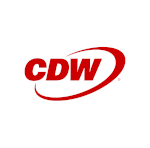VMware ESXi: A Hypervisor Built to Scale
Enterprises running mission-critical applications need a virtualization platform that delivers performance, resilience and flexibility at scale. With its proven ecosystem, robust feature set and deep support for hybrid strategies, VMware’s vSphere (with ESXi as the hypervisor) continues to be the go-to virtualization platform for enterprises scaling their IT infrastructure.
Andrew Walker, senior field solutions architect for VMware Solutions at CDW, says the decision often starts with workload requirements.
“When IT leaders are evaluating vSphere, they’re weighing its ability to support applications that can’t afford downtime,” Walker explains. “That’s where VMware’s mature high-availability features and disaster recovery capabilities come into play.”
The platform’s advanced resource management makes it well suited for large enterprises with complex environments. “Organizations can consolidate more workloads onto fewer hosts without sacrificing performance,” Walker says.
This efficiency helps companies optimize both cost and reliability — key factors for sectors where continuity is nonnegotiable.
Hybrid cloud flexibility is another driver. VMware’s VSphere provides a consistent operating model across on-premises and cloud deployments, giving IT teams the freedom to scale where it makes the most sense.
“The ability of vSphere to integrate with cloud providers allows enterprises to extend capacity without re-architecting,” Walker says.
Security is also a top consideration in enterprise decisions. VMware builds in controls to protect workloads from the hypervisor layer up, providing safeguards that align with compliance frameworks.
LEARN MORE: How the multicloud is helping manufacturers get better analytics.
Microsoft Hyper-V: A Hypervisor for Windows Shops
Microsoft Hyper-V offers a cost-effective virtualization option for midsized organizations running Windows software, providing tight integration with Windows Server, support for live migration and replication, and straightforward management for SMB workloads.
System Center integrates with Hyper-V primarily through Virtual Machine Manager, enabling centralized management of Hyper-V hosts, clusters and virtual machines. Additionally, Data Protection Manager provides backup and recovery for Hyper-V VMs, while Operations Manager monitors VM performance and host health across the Hyper-V infrastructure.
These integrations ensure that organizations have good visibility into their VM operations, effective management capabilities and easy recovery should their machines need to be reset.
Live Migration in Hyper-V is a Windows Server feature that enables administrators to move running VMs seamlessly from one host to another without downtime, ensuring workloads remain available during maintenance or upgrades. When combined with Windows Server Failover Clustering, it supports highly available, fault-tolerant systems by allowing hosts to be drained, decommissioned or updated without service disruption.
Organizations can download an evaluation version of Windows Server and try Hyper-V for free. Hyper-V is included in all editions of Windows Server, including Standard and Datacenter. Standard comes with two guest operating systems licenses for Windows Server, and Datacenter comes with unlimited guest OS licenses for Windows Server.












